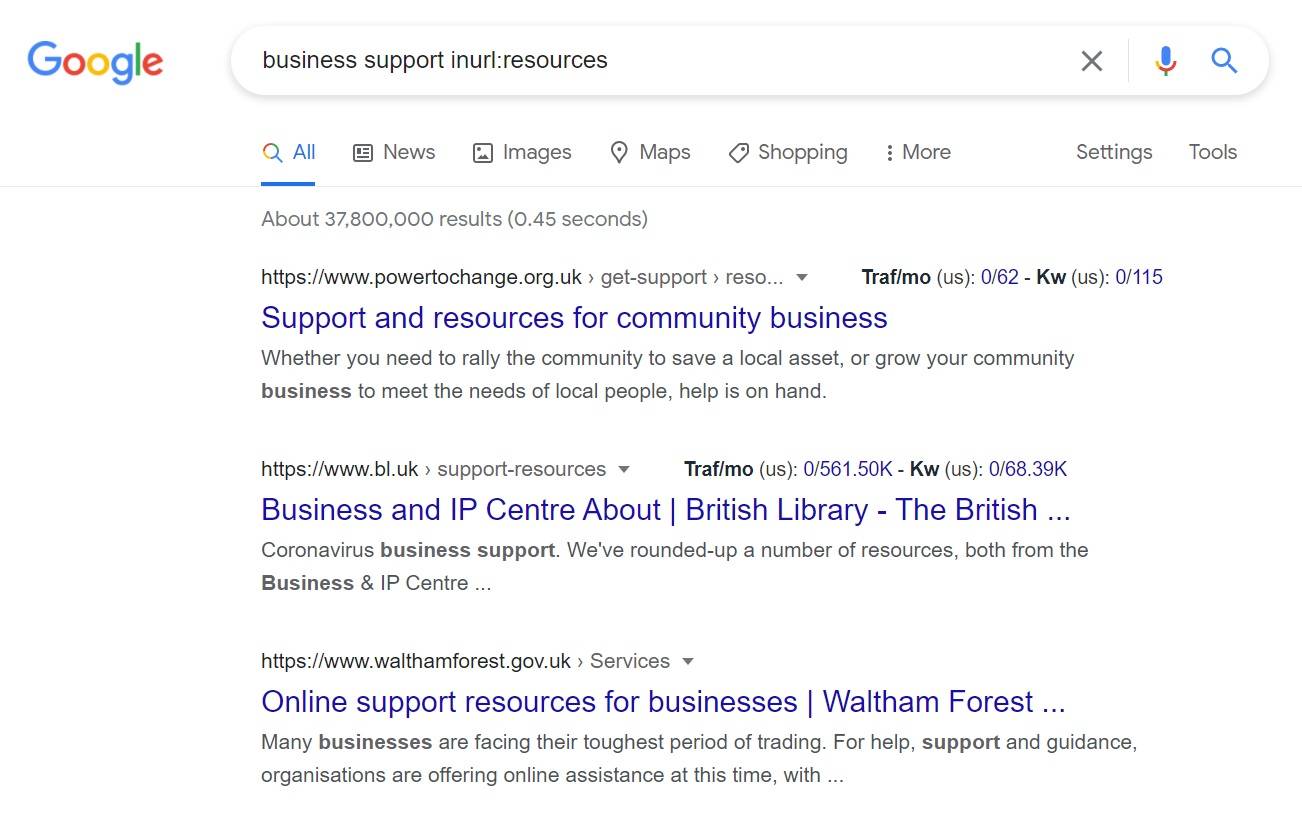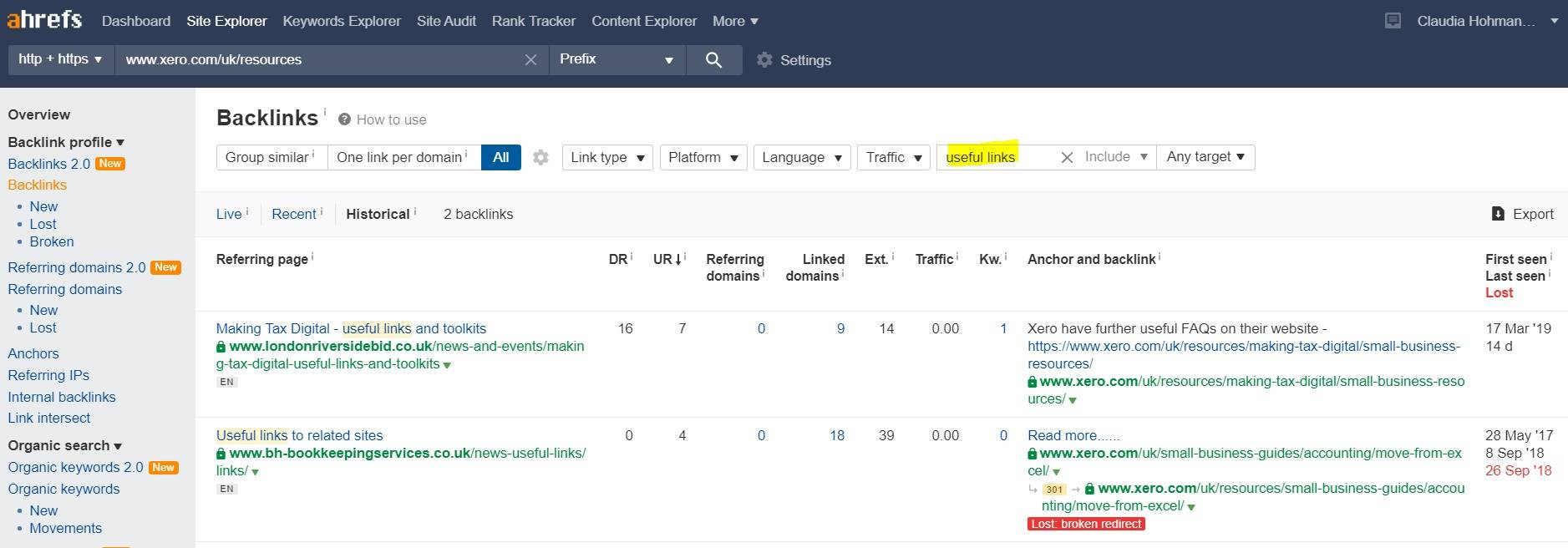The challenge
With this particular financial services client, we were given the task of building links to existing blog posts that included several resources for businesses, rather than creating fresh content. Due to client-side PR restrictions, the following parameters were set:
| ‘No Go’ Outreach Targets | Approved Outreach Targets |
| Tier 1 publications (national, regional, or editorial publications) | Niche business/finance blogs |
| Industry publications | Local business blogs |
| Regional business growth hubs |
This meant that traditional headline stats and news features would not be appropriate in the way they would if we were targeting top tier publications. We learned quickly that this wouldn’t work anyway, with fast-paced editorial businesses not having the time or inclination to consider this sort of outreach. We therefore had to take this on board and act quickly to find a solution that worked.
Perfecting the prospecting process
Prospecting for contacts was of course a huge part of this process, and one that we needed to get right. For typical campaigns we would usually aim to have a couple of hundred contacts to reach out to, covering a variety of angles and niches, but with the sort of contacts we were going after – small sites with less resource/time to respond and engage with pitches – we needed to cast the net as wide as we possibly could. Fortunately, with the experienced team’s hard work, expertise, and existing contacts, we efficiently pulled together a list of over 400 highly relevant sites.
We focused our attention on finding blogs and small sites covering start-up advice, business funding, ecommerce/web news, self-employed/contractor insights, and professional services, as well as regional business help and knowledge hubs, and occasionally some relevant low tier niche media sites.
Without a big content piece to promote, the aim for us here was to ask if the targeted sites were open to a ‘collaboration’ with our client. This could be in the form of a highly relevant guest post where we could include a link to our target page, or could involve providing expert commentary for an upcoming blog post that they could use with a link back to the target page.
Another key area of interest for us was existing ‘useful resources’ or ‘useful links’ pages on the chosen websites and blogs, so we made it our mission to find as many of these as possible. Here are a couple of quick tips on how we did this:
Use Google Search parameters to narrow down the searches to the most relevant business pages. For example, for a financial service or business-related target, search Google for:
- business support inurl: useful links
- business support inurl: resources
- invoicing inurl: useful links
- inurl: business support

Put your competitors’ pages into sites like Ahrefs to see what sort of sites and pages have been linking to them. Then, use the search bar in the Ahrefs results page to narrow the results down to “resources” or “useful links” to discover where competitors have been getting placements on relevant ‘useful resource’ pages or similar.
Find relevant sites such as those I listed above using Google search parameters. Then, enter the specific keywords you’re targeting, and try adding local areas to the search to dive deeper into local businesses and their blog pages, such as:
- :
- “start-up blogs”
- “accounting blogs”
- “accounting blog” Durham
- “business advice blog” London

For this project, finding the best sites was one side of the coin, while the other was finding the right people to contact. This became an ongoing area of improvement once outreach was live, which I’ll touch on in more detail later.
However, in the first instance, using email hunter tools such as Hunter.io (which is free to use with 100 credits each month) to find emails on sites was an invaluable time saver to build our list more quickly and efficiently. I often double checked the business or blog details on its LinkedIn page to see if the contact was still working at the company, ensuring they were therefore still active on emails.
As well as LinkedIn, I would also check Twitter accounts of contacts to see if they were active and what job roles they were currently in, as well as what they were talking about online, and if in doubt, I’d pop their email into email-checker.net to see if the email addresses were correct and still a live inbox.
Outreaching and tweaking templates
Once the arduous task of building out a niche but vast outreach list full of active contacts was completed, the next stage was outreach itself. BuzzStream is our in-house outreach tool of choice, allowing us to schedule outreach emails and follow ups, as well as tracking open rates, all while building a valuable database of contacts and relationships in one place. The tool was a significant part of the process and was so helpful for us to see open and click-through rates on various templates, feeding our learnings as we proceeded.
For outreach, we generally send one email to the contact and then two follow-ups – with two to three days space between each one. Using BuzzStream, we can see which subject lines are getting the best open rates and which templates are getting the most responses, amending the strategy as we go to remain as flexible as possible.
We found that financial services and business blogs responded well to short, concise pitches discussing the possibility of a content collaboration rather than a long, detailed salesy pitch. The short templates engaged the contact, encouraged conversation and performed better than longer, more detailed pitches in this instance, as they required less time to read and reply.
Overall, my two top tips for outreach would be:
- Keep a close eye on open-rates and general activity in Buzzstream or an alternative tool. If these tools aren’t available or aren’t within your budget, there are several free Gmail tracker plugins you can use instead while keeping track of all your outreach targets, follow-up emails and responses in a Google Sheet. If you have built a list of strong, highly relevant sites but aren’t receiving a reply or an open, you need to go back and find alternative contacts, so it’s a good idea to set time aside to go back through your list and find alternative contacts for outreach. This worked excellently for us, and while time consuming, is definitely worth it when you find the right contact or are directed to the right person.
- If your emails are being opened but ignored, your pitch needs to be amended. Keep trying different angles until you find the right one. Our most successful tactic proved to be a friendly, yet concise email requesting a collaboration, as opposed to bombarding the reader with excessive detail. The structure, tone and length of your outreach email is therefore something to bear in mind.
This approach to building links without a big piece of content achieved above and beyond link expectations through an extensively researched and personalised outreach list, and simple, yet friendly outreach emails. Generally, if you keep on top of your outreach, analysis and performance, you’ll be able to spot how and where your strategy needs tweaking, while simultaneously finding new opportunities for your brand. Of course each case will be different though, and can throw up various obstacles.
Check out what else the Digital PR team at Builtvisible can do for you, and get in touch with our expert team if you have a similar challenge, to discuss how we can help you.

